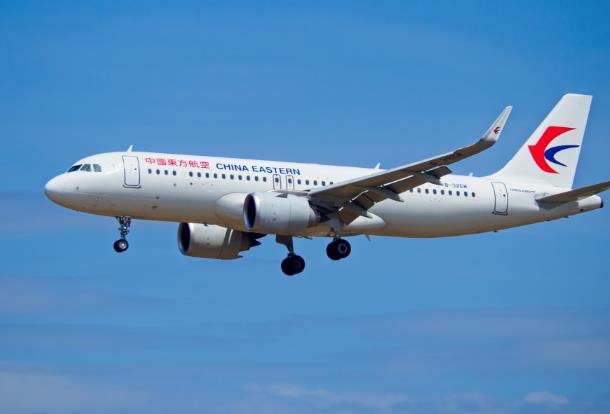ChinaTravelNews, Ritesh Gupta - How are Chinese carriers looking at refining their IT infrastructure? How are they trying to be in control of their e-commerce strategy?
It’s time airlines in China raise their level of performance in this arena.
Today a PSS isn’t just about performing routine tasks such as reservations, ticketing, inventory management, check-in etc. If an airline has to come across as a customer-centric organization, it just can’t continue to operate with a legacy system.
As a reputed group, China Eastern Airlines, too, acknowledges the significance of serving passengers in a more personalized manner.
“China Eastern understands that e-commerce is the future of selling. It is also going to be the key in the arena of customer service (to optimize experience via online, kiosk and mobile application etc.). It takes us nearer to customers. It isn’t a mere business strategy or refining of our IT solutions, rather it’s about personalizing what we have to offer to our customers,” a source associated with the airline told ChinaTravelNews.com.
Opportunity
The revenue generation opportunity is there as China Eastern served more than 80 million travellers all over the world last year. The group is currently running two distinct models, in the traditional category as well as the LCC one via China United Airlines.
China Eastern is still in the early stages of its plans to serve passengers via the company-owned digital channels, as well as its merchandising strategy. But as it has shown, it is open to re-engineering internal processes. An e-commerce company, China Eastern Airlines E-Commerce Co, was set up in December last year to facilitate planning and integration of different products and service resources to provide passengers with one-stop travel-related integrated offerings.
Transformation
Referring to the role of PSS and its overall IT strategy, the executive says, “Each airline has its own strategy. At China Eastern, we have decided that we are going to go for our next-generation PSS. There are going to be certain systems and components of PSS such as e-commerce and customer service that we are going to manage internally, and then there would be aspects that TravelSky would manage, too.”
“For the past three decades, airlines have operated on a legacy infrastructure, but it’s time to move on. We are developing new features, and going to implement them one by one,” shared the source, who mentioned that it is projected to be a 5-10 year-long roadmap to completely overhaul the existing set up.
So what’s new?
· On the e-commerce side, China Eastern has taken charge of shaping up its B2C website. “We have been working on our shopping engine for domestic flights. We are driving features on our mobile website such as calendar shopping, low fare search, and the voice request feature through which a user can search for flights. We hope a personalized domestic flights shopping engine can be developed in-house, this will be helpful for China Eastern to provide a differentiated user experience when passenger come to our website,” shared the source.
For international flights, China Eastern is now working with ITA Software for North America, and using TravelSky’s SearchOne airfare search engine for other markets.
· On the customer service side, China Eastern has been developing certain applications tailored for the airport environment, such as VIP Lounge access, seats on the flight etc. “Check-in in still handled by TravelSky as it is the core function of TravelSky DCS (Departure Control System), hopefully China Eastern own applications (are going) to be integrated with TravelSky Airport graphic user interface when they implement their new DCS of their new PSS.”
As per the information available, TravelSky has been in the midst of implementing new features for carriers in the recent past. “Discussion regarding the migration of ICS (inventory control system) and CRS to a new era PSS has been ongoing for the last 15 years however no decision had been made until 3-5 years ago.” But now things are moving.
For instance, we have learned that Air China has opted for better inventory control as well as flight information and seat mapping management. China Eastern plans to go with such features in the near future.
“TravelSky has been working on their new generation PSS system for three years; they started delivering some of the modules to Air China in 2014, focusing on the new inventory control system to cut down on labor costs. Also, refining of revenue integrity tools and O&D (origin and destination) control is taking place. Meanwhile, TravelSky is aiding Air China to target new revenue streams, such as ancillary offerings and helping the airline with new Internet booking engine tools.”
Ancillary revenue generation
Assessing the situation, a source says top carriers are currently equipped to sell seats. “Ancillary service selling is going to be a key point for us next year.”
China Eastern is currently monetizing seats and baggage-related offering via TravelSky solution. TravelSky provide seats and baggage selling solution based on IATA-Standard EMD and SeatMap management of their new PSS.
The team at China Eastern is currently working on ancillary product management system, and the objective initially is to offer transportation (pick-ups), bookings for hotels owned by China Eastern, VIP Lounge access, in-flight entertainment, in-flight Wi-Fi (if going to be available next year, trial operations of the first Wi-FI equipped commercial passenger flight were conducted in Mainland China last year), in-flight upgrade etc. “We are looking at working out details – information related to the product, inventory management, pricing etc. We are assessing options such as how to offer them through our website, apps, and also reaching out to the GDS,” shared the source.
This also raises another critical point – one that is related to distribution of content, expected to be delivered dynamically in the omni-channel shopping environment. Also, how to work out a mechanism for unbiased access to every available channel.
So for strengthening merchandising, and the delivery of enhanced airline content at the point of sale, whether in the direct or indirect channel, carriers in China are contemplating options and are open to working with 3rd party solution providers.
“It is clear that best-of-breed solution or an integrated solution looks unlikely. Carriers in China can’t work with any external PSS provider. But yes, since the requisite infrastructure related to commerce platforms (for driving a merchandising strategy) can be installed within China, carriers can count on the expertise of 3rd party specialists. There are start-ups in China, but then speed-to-market (in launching new offerings) and the level of sophistication isn’t going to favour them at this stage,” explained a source.
It is clear that carriers in China are keen on embracing new revenue streams, backed by astute e-commerce and merchandising strategy. The share of e-commerce channels, especially direct ones, is going up. In case of China Eastern, in its results for the first half, the group shared that the share of revenue from direct sales has risen by 9 pts from the same period last year.
As part of plans to lay a solid foundation for e-commerce, China Eastern has already charted its path – the team is going to handle the development of digital assets such as website, app, and related customer management, whereas it is outsourcing other key components such as facilitation of payments, and dynamic packaging capabilities. Where merchandising requirements go it remains to be seen.




